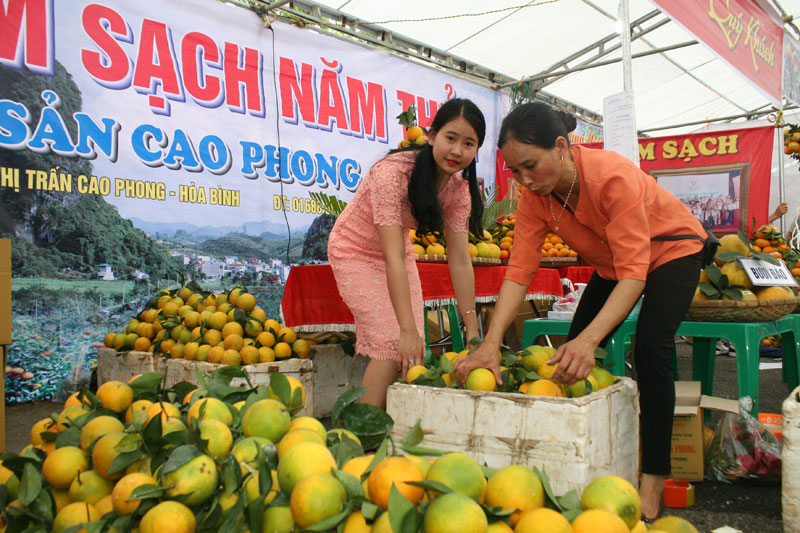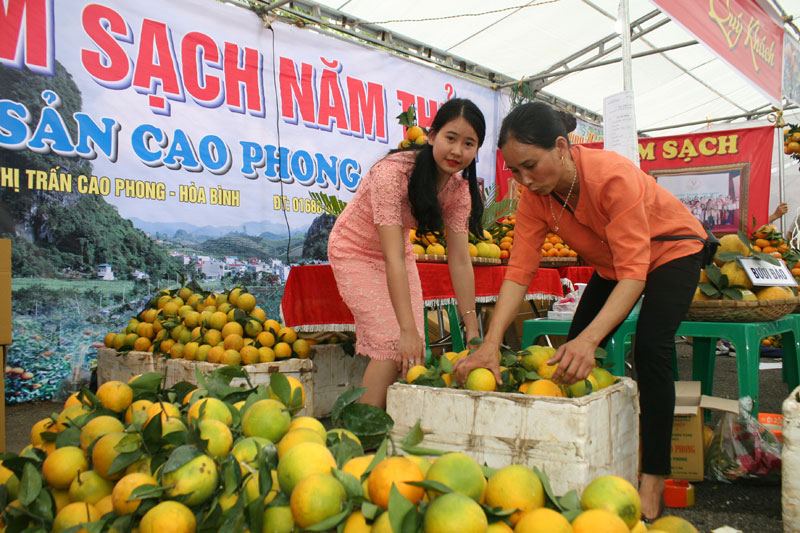



Cao Phong oranges are produced under food safety standards.
Cao Phong district was colourful when the orange festival began. Cao Phong town became an "orange street”. Along National Highway No.6 from T-junction of Ma slope running along Bung street are orange-selling stalls which were nicely decorated with plenty of local people and customers rushing to buy oranges.
Pham Minh Thai, head of the Cao Phong orange growers association, said that numerous new members joined the association this year and orange growers were presented VietGap certificates, bringing chances for Cao Phong to make steady strides in the market.
The orange growers association in Cao Phong district was established three years ago, with the initial membership of 50 that now increases to 100. Most of the members have intensive farming techniques and can apply scientific-technological advances. They also pay attention to water resources, land improvement and use of fertilisers in line with the clean and sustainable production process. As a result, the quality of the oranges has been improved, as they have fleshy peel and are juicy, sweet-smelling and delicious, with bright yellow-coloured segment. There are seedless varieties that meet the demand of consumers.
The total orange growing area of the association’s members is estimated at 200 ha, all planted under VietGap standards. Many businesses have formed links with orange growers to distribute the products. In 2017, downpours and floods affected the productivity and output of some orange growing households. However, there was still a bumper crop of orange this year, keeping the prices stable. The harvest season starts from the middle of the eighth lunar month to next year’s fifth lunar month.
The harvest time of CS1 orange lasts until near Lunar New Year, while that of Xa Doai orange runs until end of the first lunar month and that of V2 orange lasts until June. Thanks to the application of science-technology, the quality of oranges has been improved, helping the products secure a foothold in the market.
Orange is a traditional and major plant which has brought high economic values to Cao Phong district. It was also the first agricultural product of the province to receive geographical indication in 2014. In 2016, the international intellectual property institute recognised the fruit as one of 10 most popular trademarks. The Cao Phong orange festival 2017 affirmed that orange continues to become more popular, making a breakthrough in the province’s agricultural development orientation.
Many local organisations and individuals that grow and sell the fruit received certificates and prizes of clean and safe products voted by prestigious agencies.
Cao Phong is currently home to more than 2,800ha of oranges and the output in 2017 is expected to reach 33,000 tonnes, raking in 500-700 million VND a hectare. Total revenue is about 600 billion VND and the number of families becoming rich by growing oranges is on the rise. Last year, hundreds of families earned an average income of 100-500 million VND, while 122 families made more than 500 million VND, 44 families made 1-3 billion VND and around 10 households earned over 3 billion VND a year./.